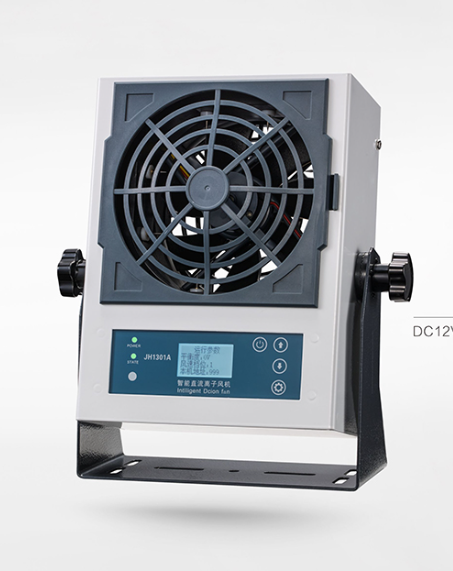The Impact of Static Electricity on Home Appliance Manufacturing and Design Prevention
Introduction
People are no strangers to static electricity. When you touch a TV screen, you may feel a slight electric shock; when taking off a synthetic fiber sweater, you can hear crackling discharge sounds, and even see sparks in the dark. What you perceive, hear, or even see in daily life is essentially static electricity discharging. In nature, lightning is also a powerful form of static discharge.
Today, static electricity has become a close "companion" in our lives. People have grown accustomed to this discharge phenomenon, and while it may sometimes cause discomfort, it does not pose any direct harm to the human body. However, the situation is quite different for electronic devices. High-density and high-gain semiconductor components are becoming increasingly sensitive to electrostatic discharge (ESD). For instance, the breakdown voltage of MOS circuits is only 100V, while newer devices can be damaged at voltages as low as 30V.
The hazards of electrostatic discharge (ESD) and the importance of static electricity protection are becoming more recognized in modern electronics manufacturing. In fact, ESD-related damage continues to cost the global electronics manufacturing industry billions of dollars annually.
Causes of Static Electricity
We know that all matter is composed of molecules, which in turn consist of atoms. Atoms contain negatively charged electrons and positively charged protons. Under normal conditions, an atom has an equal number of protons and electrons, maintaining a charge balance, so it appears neutral. However, when an external force displaces electrons from their atomic orbit, they can transfer to another atom, creating an imbalance. The atom that loses electrons becomes positively charged, while the atom that gains electrons becomes negatively charged. This excess or deficiency of stationary surface charges is what we call static electricity.
Static electricity can be generated through several mechanisms, including:
Contact and separation charging (solid-state charging)
Inductive charging
Frictional charging
Human body charging
How Humans Accumulate Static Electricity
The human body can become charged in three main ways:
Contact and separation charging – Activities such as movement, friction between clothing, and shoes contacting or separating from the ground generate static electricity.
Inductive charging – When a charged object is near the body, it can induce a charge on the human body.
Adsorption charging – When a person moves through a space containing charged particles, these particles can be attracted to and accumulate on the body.
Certain external factors significantly affect the generation of static electricity, with humidity and human activity being the most important.
Factors Affecting Static Electricity Generation
1. Human Factors
Constant movement causes the human body to accumulate static charge.
Skin, hair, and insulating materials in clothing can store large amounts of static charge.
During operations, static charge from the human body can transfer (discharge) to electronic components or equipment.
2. Low Humidity (Dry Air)
Humidity has a major impact on the accumulation and dissipation of static electricity.
Low humidity → High static voltage
High humidity → Low static voltage
This is because higher humidity allows insulating material surfaces to adsorb water molecules (sometimes containing conductive impurities), reducing insulation and enabling static discharge.
Different materials are affected by humidity in different ways:
Highly hygroscopic materials (such as glass) are easily moistened and greatly affected by humidity.
Low-hygroscopic materials (such as paraffin and PTFE) are less affected by humidity.
3. Type of Materials in Contact
Different materials generate and store varying levels of static charge. Synthetic materials, general plastics, and insulators are more prone to static accumulation.
Electrostatic Discharge (ESD) and Its Impact on Electronics
Electrostatic discharge (ESD) occurs when objects with different electrostatic potentials come into contact or are influenced by electrostatic induction, causing charge transfer. When the electrostatic field energy reaches a certain level, it breaks down the medium and discharges.
While ESD has little noticeable effect on the human body, it can significantly impact electronic components during production, installation, testing, and operation if not properly controlled.
1. Damage to Semiconductor Devices
The electronics industry, especially semiconductor and microcircuit manufacturing, is highly susceptible to ESD. The rapid advancement of technology has led to smaller, more multifunctional, and smarter electronic products, such as high-density integrated circuits (ICs) like MCUs. These components are characterized by:
Short line spacing and fine circuit lines
High integration and fast computing speeds
Low power consumption and low voltage tolerance
High input impedance
These characteristics make them increasingly sensitive to static electricity. Unlike traditional electronic components, even a tiny ESD energy pulse can cause irreversible damage to these devices.
2. Types of ESD-Induced Failures
ESD-induced failures in electronic components can be classified into:
Immediate failures – Permanent breakdown or destruction of semiconductor material due to a single high-energy discharge.
Latent failures – Partial degradation of a component's performance, which may pass initial testing but later fail in real-world use.
Some common ESD-induced damage includes:
Soft breakdown of PN junctions, reducing product reliability.
Metal coating breakdown inside chips, increasing defect rates.
Wire breakdown inside chips, increasing production waste.
3. Sensitivity of Different Components to ESD
The sensitivity of different electronic components to ESD varies. VMOS devices are among the most sensitive, and such devices are commonly classified as electrostatic-sensitive devices (ESD-sensitive components, or SSDs). A safety voltage threshold of 30V is commonly used for static electricity precautions.
How to Prevent Static Electricity in Home Appliance Manufacturing
Static electricity is everywhere, so home appliance manufacturing must adopt effective protective measures.
1. Machine-Generated Static Prevention
Grounding machines is a simple and effective way to eliminate machine-generated static electricity and prevent damage to home appliances during manufacturing.
2. Human-Generated Static Prevention
Identify and eliminate the source of static electricity.
Provide a discharge pathway before static reaches sensitive components.
MCU chips are especially vulnerable, and their failure can cause the entire appliance to stop functioning.
3. Common ESD Protection Circuit Designs
(1) RC Circuit or Single Resistor/Capacitor Circuit
Since resistors dissipate energy, placing a resistor in the electrostatic pathway is an ideal, cost-effective solution.
The design (Figure 1) places ESD-resistant components near high-static areas while keeping sensitive components (e.g., MCUs) away from static sources.
(2) Single Diode Circuit
If adding a resistor affects circuit functionality, a diode can be used instead (Figure 2).
Since static discharge is very fast, the diode must have a quick response time to be effective.
Common choices: IN4148 (cost-effective) or TVS diodes (better performance but higher cost).
Conclusion
Electrostatic discharge (ESD) is a major concern in home appliance manufacturing. Proper design measures, including machine grounding, human static control, and effective ESD protection circuits, can prevent damage to sensitive electronic components, improving product reliability, lifespan, and overall quality.

Electrostatic Discharge (ESD) Eliminator
Ionizing Air Gun
Ionizing Stick
ESD Mat
ESD Wrist Strap
Ionizing Air Blower

Electrostatic Discharge (ESD) Eliminator
Ionizing Air Gun
Ionizing Stick
ESD Mat
ESD Wrist Strap
Ionizing Air Blower
